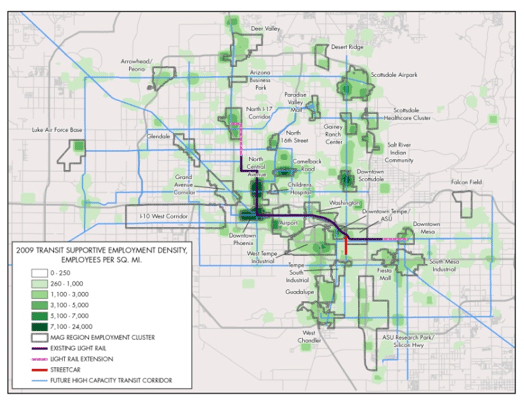TRANSIT-ORIENTED DEVELOPMENT
Strategic Economics is committed to supporting high-quality transit-oriented development (TOD) in residential neighborhoods, mixed-use districts, and employment areas. In this capacity, we work with developers, cities, transit agencies, metropolitan planning organizations, housing authorities, and a wide range of community-based and philanthropic organizations. Our work focuses on every scale of TOD including individual buildings near a transit station, station areas, transit corridors, and regional transit systems. We have pioneered a methodology for estimating demand for both residential and employment-oriented TOD. Our firm has also completed several ground-breaking research papers on a variety of TOD related topics including value capture and TOD, and transit and economic development, and have contributed to TOD implementation across the country.
PROPERTY VALUE AND FISCAL BENEFITS OF BART
Client: San Francisco Bay Area Rapid Transit District
Location: San Francisco Bay Area
Strategic Economics quantified the benefits that BART confers to properties near its stations and the importance of BART for the tax base of local jurisdictions. The analysis revisited earlier studies of the property value and fiscal impacts of BART in light of recent research about the economic benefits of transit, and estimated the impact of BART on residential property values. Strategic Economics evaluated County assessor’s data to understand the importance of BART for the local property tax base, finding that properties near BART stations contribute significantly to tax revenues of BART-served communities, and that assessed values near stations are increasing faster than the region as a whole. In addition, Strategic Economics used hedonic regression analysis to estimate the property value premiums associated with proximity to BART stations for single-family and condominium homes. The analysis found that BART generates premiums of up to 15 percent for residential properties near BART stations. Strategic Economics was subsequently retained to analyze the impact of BART on commercial office and apartment uses; this analysis is currently underway.

REIMAGINING HOUSTON
Client: Metropolitan Transit Authority of Harris County (METRO)
Location: Houston, TX
Strategic Economics worked with a team of consultants to fundamentally “re-imagine” its bus network to become more central to the life and economy of the region. To assist in identifying locations where new transit lines might help to stimulate economic development, Strategic Economics created a geo-spatial TOD Index for the entire Metro service area. The index incorporated a range of factors – such as property values, development activity, household income and employment density – which have a demonstrated impact on the market for TOD. Building on one-on-one interviews with the local development community, Strategic Economics also helped to prepare a report that illustrates how the reimagined transit system creates opportunities for TOD.
SUSTAINABLE TRANSPORTATION AND LAND USE INTEGRATION STUDY
Client: Maricopa Association of Governments (MAG)
Location: Phoenix, Arizona
Strategic Economics was retained by the Maricopa Association of Governments to help evaluate the economic potential for transit-oriented development along high-capacity transit corridors in the Phoenix region. Strategic Economics studied demographic and employment trends in the region, and mapped the geography of the market for higher density development in Maricopa County.
The results of the analysis allowed the consultant team, led by Arup, to develop transit system scenarios that would help the region plan for a more sustainable future. Strategic Economics also developed strategies for the Maricopa Association of Governments and local jurisdictions to move towards implementation of transit-oriented development under varying market conditions.

HONOLULU RAIL SCENARIOS AND IMPACTS
Client: The Pacific Resource Partnership
Location: Honolulu, Hawaii
Strategic Economics teamed with Calthorpe Associates to evaluate a wide range of economic and other benefits associated with the future Honolulu Area Rail Transit line. The Pacific Resource Partnership commissioned the study to examine the broader benefits of the new rail service, with a focus on the benefits of concentrating future growth near the planned rail investment. The project was guided by an Advisory Committee that included representatives from local businesses, environmental organizations, property owners and developers.
Strategic Economics assisted in developing a model that evaluated the impact of different development patterns on city/county revenues, infrastructure costs, household costs, land consumption and environmental factors. Strategic Economics examined how the introduction of rail may combine with changing demographics and housing needs to influence a shift toward compact development near the rail alignment. A fiscal assessment was performed – in close collaboration with local developers and government staff – to understand the revenue and cost implications of different growth patterns. Building on this analysis, Strategic Economics developed a transit-oriented development (TOD) implementation framework that described opportunities and barriers to TOD in Honolulu, categorized station areas according to implementation need, and suggested policies, tools and strategies to help support the development of quality neighborhoods near future transit stations.
The Rail Scenarios study has informed an ongoing dialogue among a range of public and private stakeholders about the potential benefits of the rail investment and strategies to promote efficient land use patterns and economic development.
